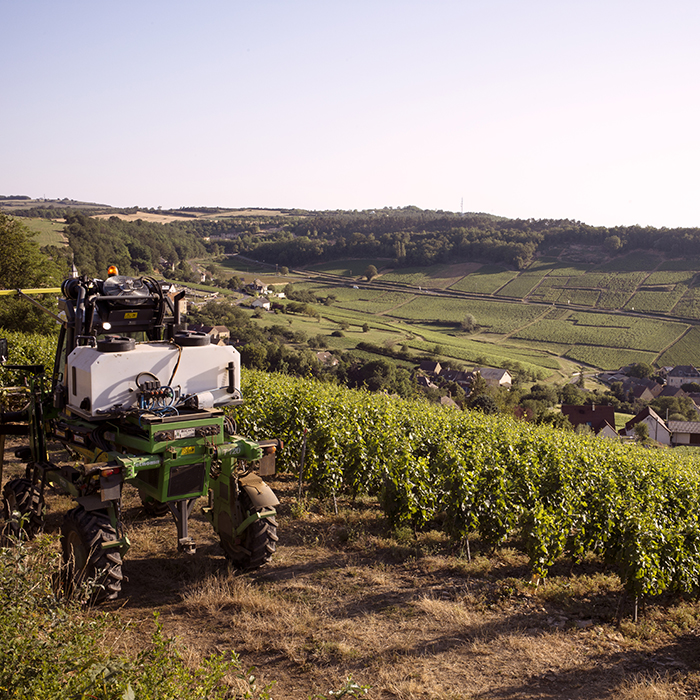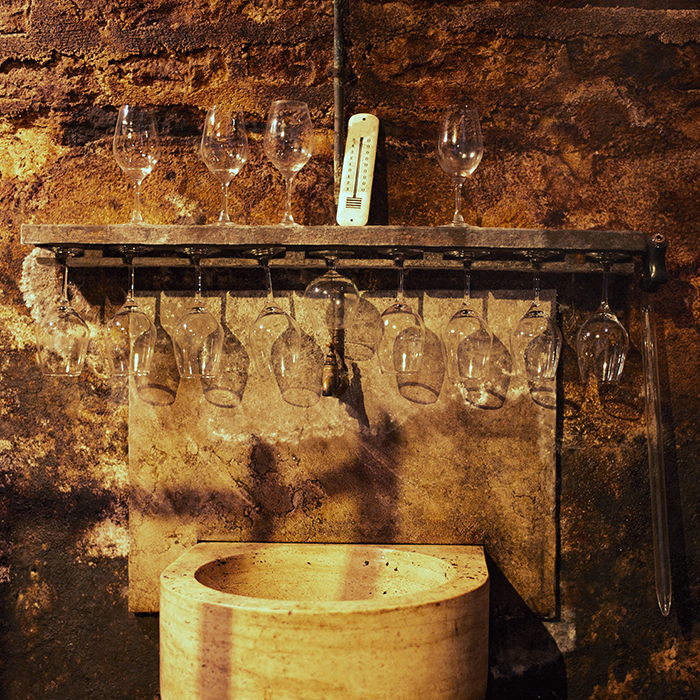What to drink in 2020: Burgundy
Author: Adam Bruntlett

White Burgundy
An excellent tasting of 2010 white Burgundy organised last year by Sarah Marsh MW in our cellars at No.3 St James’s Street provided a timely reminder of the quality of this vintage. All of the 30 or so wines tasted, which ranged from humble Bourgogne Aligoté to a fine magnum of Caroline Gagnard’s Bâtard-Montrachet, showed well, with none of the wines displaying signs of the dreaded premature oxidation (premox) that haunted the 1990s and 2000s. However, while many wines seemed able to go on for a few years still, none felt as though they would improve significantly, so I would recommend enjoying them now while they are in a happy place.
The same applies to anything older: while some real enjoyment can be found in these, I would strongly suggest anything from that period is drunk up now to minimise the chances of encountering the well-publicised risks of premox.
The 2011 vintage’s reputation grew from a somewhat inauspicious start, and is to my mind a touch more successful in white than red, the slightly herbaceous character of the year suiting Chardonnay better than Pinot Noir. That said, these wines should be drunk in the next year to avoid disappointment. The 2012 vintage, on the other hand, provided concentrated whites in a slightly riper style. These can be approached now, but it’s safe to hang onto them for a couple more years.
The 2013 vintage was on something of a knife-edge with botrytis, and the wines tend to fall into one of two camps: slightly underripe and lacking a bit of flavour ripeness, or with the tell-tale orange flavours and twist of bitterness that comes from a touch of noble rot. I tend to hold a preference for the latter style, though terroir-definition is lacking a little. Both styles are ready to drink now, and the richer, later-picked wines pair well with foie gras and spiced dishes.
The 2014s are true classics, wines for the purists. The acidity is often searing, with many wines seeming a little austere and charmless, even at Bourgogne or Village level. Certainly, if a richer and more generous style is what you are looking for, the 2014s should be ignored. Personally, I will be burying mine at the very back of the cellar and ignoring them for many years. Changes in the vineyard and cellar, as well as the use of alternative closures such as screwcaps and DIAM corks mean the risk of premox is not a factor.
The 2015 vintage is fast becoming a favourite of mine; the puppy fat has been shed and there is a little more classicism than we initially thought. Such is my enthusiasm for the 2015 whites that I feel it arguably surpasses 2016, a vintage which I tasted in great detail in May, with mixed results. The 250 wines we assessed blind showed a greater imprint of the difficult vintage than in barrel and tank, and I would be inclined to drink them sooner rather than later. The notable exception to this is the wines of the Mâconnais, which are – in the most part – outstanding (provided hail damage was not a factor).
Wines from 2017 offer something for everyone; the classic acid backbone of ’14, combined with some of the generosity of ’15 or ’18. The wines are charming and all too tempting to enjoy now, but I would urge patience to derive maximum pleasure. In Chablis, these wines are arguably more complete than the 2014s.
The 2018 vintage has reaffirmed the ability of the region’s growers to produce excellent white wines even in challenging vintages. The warmth of the year has given the wines a certain generosity, but they have gained in freshness during their élevage and will continue to do so at bottling and beyond. Much like 2015, I feel this is a vintage which will turn out to be better than anticipated for Chardonnay. The wines are approachable and can be broached when young, but there should be no hurry, and the best will offer good medium-term ageing capacity. The Mâconnais appears to have really overperformed in 2018 and continues to offer excellent value when compared to the Côte de Beaune.

Red Burgundy
With 2018 the latest in a succession of early harvests, my cellar tastings often descend into discussions around what the future profile of Burgundy will be, and what the last “old-fashioned” Burgundy vintage was. Allied to the recent warmer conditions is a definite move towards producing wines that are more approachable in youth; less extracted, with less new oak and a more delicate, elegant profile.
At its best, 1999 should continue on for a good few years yet, although the optimum window is certainly open. The two immediate successors, 2000 and ’01 are also both enjoyable now and at their peak. A tasting of 2002s a year or so ago suggested they should be drunk fairly soon, showing some heavy-handed winemaking which masks some of the charm of the vintage. They may still shed the oak and tannin, but generally I don’t feel they are likely to improve significantly.
The yin and yang vintages of 2003 and ’04 are always fascinating and worth comparing side by side. The ’04s, light-bodied and high in acid and tannin, show the style of Burgundy that purists perhaps now crave – a stark contrast to the ripeness of 2018, for example. The previous year, a heatwave vintage with acute spikes of hot weather, gave wines of much greater concentration and power. The ’03s have taken time to come around, but there is a feeling of near-indestructability about them, even if they are not classically Burgundian in profile. It’s safe to press on, but I think they will surprise with their longevity.
The 2005 vintage has substantial tannic structure. These are robust wines which even at village level do not offer much pleasure at the moment. One to forget for a while at the back of the cellar. In complete contrast, ’06 and ’07 are ready to go, and should be drunk up in the next couple of years. The 2008s’ high acidity gives them a little more longevity, but again these are wines which will give most pleasure in the near future.
The 2009s and ’10s are worth waiting for, although the richer profile and lower acidity of the former means it is safe to open a bottle or two. The ’11s are in a good place at the moment, although the herbaceous character and muted fruit of some wines might not be too everyone’s taste. They are excellent food wines, particularly for savoury dishes featuring mushrooms or lighter game.
2012 remains youthful in character, although I have begun to approach some Bourgogne and lesser village wines with pleasing results. There is plenty of fruit and a structure which suggests the more serious wines need a few years yet. 2013 is interesting; the last Burgundy vintage to take place in October and perhaps the last of the true “classic” Burgundy vintages. As such, opinions remain divided on its readiness; the relatively high acidity and nervy fruit profile make it an ideal food vintage, but it may come to be revered as the last of its kind.
The 2014 vintage is a personal favourite; energetic and bright, the crunchy acidity and modest alcohol level of these wines makes them very drinkable, particularly at the table. It is not a vintage with huge concentration, but its vigour suggests there should be no hurry. Wines from good growers, even at Bourgogne level, will benefit from decanting for a few hours before drinking, to allow the acid to soften a little.
The 2015s and ’16s should arguably be left alone for a while, the former a little richer and the latter somewhat fresher. Neither should be broached for several years as they are likely to close up soon, if they have not already done so.
A real charmer of a vintage, 2017 is one whose reputation I feel sure will only improve over the next few years. Initially overshadowed by the whites, the reds are an absolute joy at every level, and can be drunk now on their fruit. There is an effortless, transparent quality to these wines; everything is in perfect harmony and there is a purity of Pinot Noir fruit that will delight lovers of Burgundy. While I may be proven wrong, I do not feel these wines will close up, meaning they are both approachable and age-worthy.
A final, quick note on the Beaujolais, whose wines continue to offer excellent value and real cellaring potential. Indeed, my favourite wine experiences of 2019 included a magnum of 1983 Beaujolais from the south of the region (outside of the Villages zone) and a three-litre bottle of 1999 Morgon from a Roger Thévenet. Recent vintages have left Beaujolais fans spoilt for choice, but 2018 seems richer and perhaps more approachable than the slightly more austere 2017s. The 2016s are elegant and delicate, but can be approached now, whereas the beefier 2015s perhaps require a little more patience. The 2014 and 2012 vintages should be drunk up, whereas 2013 and 2011 still offer plenty of ageing potential from serious producers in the top crus.
Read the rest of our series on what to drink in 2020 here; or browse our range of Burgundy on bbr.com



I enjoyed reading Adam Bruntlett’s blog – it is obvious he has much experience of older Burgundy vintages.
My comments relate to his advice about drinking dates of particularly 2005, 2009 and 2010. I have found a lot of pleasure in drinking the lesser wines of 2005 though admittedly some 1er Cru and all GC should be kept. 2009 (except GC) are mostly drinking well now and all the wines I have tried from 2010 have been gorgeous – it was a great year. I am not in the habit of drinking “fruit tarts” (Jasper Morris’s perjorative term for young burgundy that has not had a chance to mature) but prefer the secondary flavour and aromatics of older Pinot noir. I think it is a mistake to wait too long – many of the 2002s went “over“ three or four years ago. I realise that personal preference is everything eg the 2011s are better than Adam gives them credit for, though the vintage was a small one if it were Bordeaux it would be described as “classic”…..
Adam, thank you for this insightful and hugely helpful blog. Just starting my Burgundy journey, this has been an excellent reference in selecting wines to enjoy in their various stages of evolution, referencing the profiles of the vintage. Personal tastes will always prevail, but I think too much is made of vintage charts. Part of the excitement to me is tasting the terroir and skillful expression of the vineyard with the conditions presented. There are few constants in life. Wine being no different – in vintage or in bottle. Thanks again, and hope for a 2021 edition.
Hi David – Adam had the following note for you:
Many thanks for your comment; I am pleased that the article proved useful to you. I agree that deciding what to drink and when requires a nuanced approach, not only because wines from different villages, vineyards and domaines will often have wildly varying drinking “windows” in the same vintage, but because drinkers’ tastes are so varied. What might appear to be a delicious, mature Burgundy to one drinker could well appear to be “past its best” to another. I have always felt that wine is almost a living thing and its unpredictability can be as frustrating as it is fascinating. A 2021 edition should be on its way in the coming weeks.